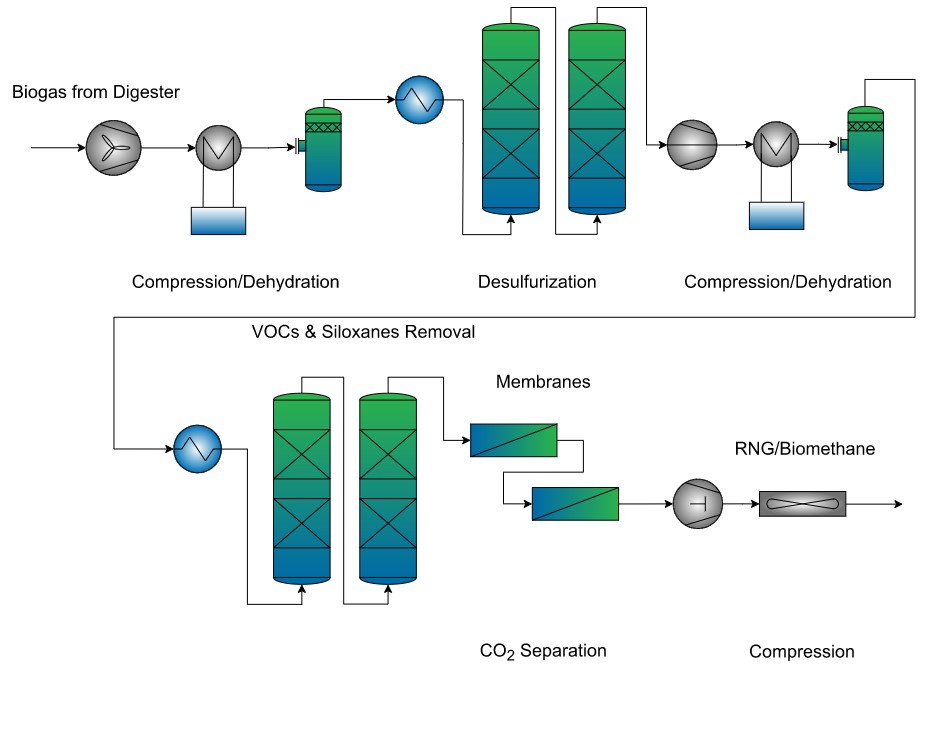Biogas Purification & Upgrading
Pyro Green-Gas designs and builds biogas valorization systems using a combination of proven technologies to purify by extracting impurities such as hydrogen sulfide (H2S), siloxanes, Volatile Organic Compounds (VOCs), ammonia (NH3), moisture (H2O), oxygen (O2), nitrogen (N2); and to upgrade biogas by separating carbon dioxide (CO2) from methane (CH4) to produce useful Renewable Natural Gas/biomethane.
Generally speaking, raw landfill gas and digester gas present differing characteristic of impurities and contaminants, and in different concentrations. That is why our systems are tailored to specific customer requirements. Whatever the final use, from power generation to fuel Natural Gas Vehicles (NGVs), grid injection, or even liquefaction, Pyro Green-Gas is the partner of choice for your biogas valorization project.
Design
Features &
Benefits
Biogas Purification and Upgrading Process
Biogas Process


A typical valorization process might start with a light compression followed by desulfurization (also known as sweetening) to remove H2S. The technology selected for a given biogas will depend on the H2S concentration. For high concentrations, more often encountered with landfill gas, Pyro Green-Gas uses a chelated iron-based, regenerable, absorbent liquor, ensuring low operational costs. For lower concentrations, an iron base and/or activated carbon adsorbent media is more appropriate. To maximize media loading and enable media change without interruption to the process, Pyro-Green Gas designs its adsorbent towers in a Lead-Lag configuration.
Following desulfurization, the biogas is cooled and condensate is captured and extracted prior to compression ahead of the removal of siloxanes and VOCs. The compressed biogas then flows to either a Thermal Swing Adsorption (TSA) unit for larger biogas flows or high contaminant concentrations, or to a Lead-Lag activated carbon adsorbent system for lower gas volumes and lower VOCs and siloxanes concentrations.
The next stage involves the separation of carbon dioxide (CO2) from the purified biogas to isolate methane (CH4). This is achieved through either a Vacuum Pressure Swing Adsorption (VPSA) process, often the method of choice for biogas from a landfill; or, a multistage hollow polymeric fiber membrane separation process; often used for biogas sourced from anaerobic digesters.
At this stage, the biomethane may be ready for direct use, compression and grid injection, or for further processing into Liquefied Natural Gas (LNG). In some cases, depending on initial concentrations and product requirements, special treatment for the removal of N2 or O2 is warranted. Many technologies can serve for this from catalytic oxidation, which burns excess oxygen into CO2, to adsorptive separation processes that can separate out both Nitrogen and Oxygen yielding a high purity product.
